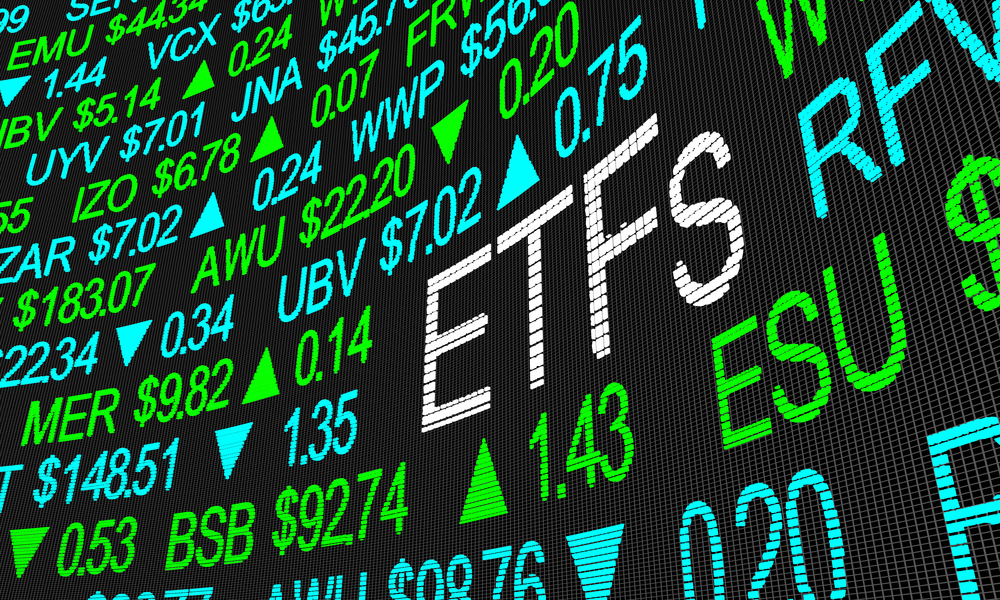
Every investor looks for some objective performance standard to measure the success of their investments. A stock market index is one of the most common standards. The Dow Jones Industrial Average (DJIA) is the oldest and arguably the most well-known stock market index. However, “the Dow” as it is frequently called includes only 30 stocks. The Dow components are selected by the Wall Street Journal editors based on broad guidelines that limit the index to large, respected companies. While the Dow is considered to be a fair representation of the broader market, its limited scope means some sectors are not represented.
The S&P 500 Index meanwhile includes 500 of the largest companies listed on U.S. stock exchanges. The S&P is weighted by market cap. With that in mind, the performance of the top 10 companies (by market cap) account for over 20% of the index’s performance. This has broadened its appeal to a large investor base.
Indexes Are Made for Exchange-traded Funds
To a growing number of investors, an exchange-traded fund (ETF) combines the best of both worlds when they are looking for the versatility of owning individual stocks and the diversification of a mutual fund. While there are some distinct differences between a mutual fund and an ETF, the basic premise is the same. An ETF can give investors diversity between asset classes, but also allow them to invest in specific niche assets or indexes.
As of this writing, the S&P 500 is up around 15% in 2019. However, there are some ETFs that are easily outpacing the S&P 500.
The Invesco DWA Technology Momentum ETF (PTF)– Can I interest you in a fund that is up nearly 50% in 2019? That is the story behind this member of the Invesco fund family. Normally at least 90% of the components for the index are based on the Dorsey Wright Technology Technical Leaders Index (DWA Technology Technical Leaders Index). This index identifies companies that show high relative strength. Relative strength measures the magnitude of recent price changes to track momentum that may indicate when stocks are overbought or oversold. At least 30 of the companies in the index are from the NASDAQ US Benchmark Index. The fund has an expense ratio of 0.74%.
The Renaissance IPO ETF (IPO)– One feature of ETFs is that, unlike most stock indexes, companies are added and removed more frequently. Such is the case with this ETF that tracks a rule-based Renaissance IPO Index. This index looks for sizeable new public companies (defined as being public for less than two years). The index removes companies that have been public for two years during their scheduled quarterly reviews. While potentially focused on more volatile stocks than some investors would like, the ETF is up over 25% for the year. The fund has an expense ratio of 0.60%.
The Global X FinTech ETF (FINX)– This is another ETF that is up over 25% for the year. Another benefit of an ETF is the ability to target different sectors. In the case of FINX, the sector is financial technology (or Fintech). Some investors may get scared off by the term Fintech because it is frequently linked to the surging cryptocurrency movement. While that is true, the major money to be made in this sector encompasses a range of innovative mobile and digital solutions that are transforming the global banking industry (whose companies make up a multi-trillion dollar market cap) as well as industries like insurance, investing fundraising, and third-party lending.
Invesco High Yield Equity Dividend Achievers ETF (PEY)– Like dividend stocks, dividend ETFs have the dual benefit of regular income combined with the opportunity for capital growth. Just as dividend stocks beat non-paying dividend stocks, this member of the Invesco fund family has had a return of nearly 475% in the bull market that began on March 2009. One of the reasons for the fund's exceptional performance was the accommodative monetary policy of the Federal Reserve for most of this bull market. With all signs pointing to the Fed continuing their recent move to lower interest rates, the appeal of this fund should continue. The fund yields 3.93% annually as compared to the SPDR S&P 500 ETF (SPY) that yields 1.86%.
Before you make your next trade, you'll want to hear this.
MarketBeat keeps track of Wall Street's top-rated and best performing research analysts and the stocks they recommend to their clients on a daily basis.
Our team has identified the five stocks that top analysts are quietly whispering to their clients to buy now before the broader market catches on... and none of the big name stocks were on the list.
They believe these five stocks are the five best companies for investors to buy now...
See The Five Stocks Here
MarketBeat has just released its list of 20 stocks that Wall Street analysts hate. These companies may appear to have good fundamentals, but top analysts smell something seriously rotten. Are any of these companies lurking around your portfolio? Find out by clicking the link below.
Get This Free Report
